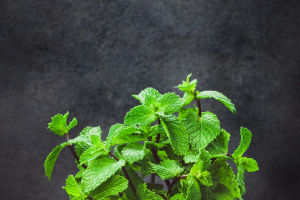Australia lacks mountains and has large desert plains. As long as a plant has a firm foothold in one area, it can easily spread across the country on a large scale. Invasive floods of cacti are the most typical.
In the 18th century, cochineal was the mainstream raw material for making dyes. It was monopolized by Spain for a long time, and the price was extremely high. In order to reduce the cost of dyes, the British introduced cactus from Brazil to Australia in 1788, trying to use it as a "petri dish" to breed parasitic cochineal.
However, Australia's dry climate is not suitable for the growth of cochineal, and cacti, which have no natural enemies, rely on shallow and wide root systems that can absorb a lot of water and can reproduce sexually and asexually, are growing wildly.
In Queensland and New South Wales, which have a climate very similar to Brazil, croplands, pastures, heathlands and even town streets are lined with cacti.
Cacti seized the soil, water, and other living resources of native plants, resulting in a sharp decline in the number of native plants and the herbivores that feed on these plants.
It took Australians decades to recognize cacti are not good for this country. About 100 years after the prickly pear was introduced, Australia first became aware of the potential danger and passed its first prickly pear destruction ordinance in 1886, after which a bounty was offered for a method to effectively eradicate the prickly pear.
Later, the Australian government determined that the crazy growth of cacti was mainly caused by the undigested seeds excreted by birds after eating the fruits, so it allocated funds to call a large number of people to shoot the birds. But birds are only a secondary cause of the cactus bloom. Therefore, after many birds were hunted, the desired effect was not achieved.
Later, the Australian government organized fire and knife-cutting, but the cactus took root, and after cutting it off, it grew more.
Later, people sprayed highly toxic pesticides on cacti. Although it had an immediate effect, it also caused serious pollution to the land. So far, arsenic residues can still be detected in Queensland and New South Wales.
Finally, after 12 years of biological control research, the Australian government finally found the borer moth in 1925, which has no side effects and can be called the nemesis of cactus. They mainly feed on cactus leaves, so they are also called "cactus moths". The cactus moth not only eats the leaves of the cactus but also destroys its roots and stems, completely cutting off the possibility of its "resurrection".
Australia has finally emerged victorious in its decades-long battle against cacti. In order to commemorate this major ecological event, Queensland also specially built a memorial hall for the cactus moth.
In addition to cacti, calla lilies, gorse and blackberries have also been invasive plants in Australia, listed as "weeds".
In recent years, it has been found in Australia that the rootless vine can kill double-petaled gorse and blackberry. It's the first native plant ever found in Australia to fight invasive weeds. Previously, Australia spent more than 7 million Australian dollars a year to remove double-petaled gorse, but now there is no need to spend huge sums of money.
The British "Daily Mail" stated that since Europeans settled in Australia, invasive species have wiped out 79 species of native plants and animals in the country. Dealing with the damage caused by invasive species has cost Australia A$390 billion over the past 60 years.
Australia currently spends A$25 billion a year fighting invasive species, but experts expect that to rise to as much as A$150 billion a year by 2031.
At the end of last year, the research results of the Australian Commonwealth Scientific and Industrial Research Organization and the Invasive Species Solutions Center showed that more than 80% of the country's national-level endangered species and habitats are threatened by the invasion of alien species.
If no action is taken, by 2050 There will be a new wave of extinction of native species.


